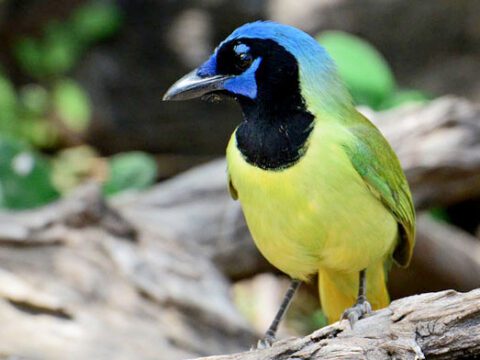A Second Look at “Seagulls”: Tips for ID
By Jessie Barry
July 15, 2010Any visit to a beach can give almost anyone the chance to get stumped by gull identification. But don’t dismiss those flocks as nondescript, confusing “seagulls.” With a few key concepts, anyone can learn to pick out the most common three or four gull species along any coast, lending more enjoyment and meaning to your day at the beach.
These four gulls are common in their range:


The Glaucous-winged Gull is a large gull found on the Pacific coast, has a light gray mantle, with wing tips that are only slightly darker than the mantle. Photo by Ganesh Jayaraman. 

Laughing Gulls are a medium-sized gull of the Atlantic and Gulf coasts, has a dark gray mantle, black head in the summer, black wing tips, and deep red bill. Photo by Laura Erickson.


The Herring Gull is a large gull found across North America, is similar with black wing tips. Photo by Laura Erickson. 

The Great Black-backed Gull is the largest gull, inhabiting the north Atlantic coast, has a nearly black mantle, black wing tips and pink legs. Photo by Mike Allen.
The most important basic keys to identifying gulls are size, shape, and color pattern. In fact, with practice, experts can identify nearly all gulls by size and shape alone. Get started by sorting gulls into three general sizes. Large gulls are monsters, with thick bills and broad wings. These include herring, great black-backed, western, and glaucous-winged. Classic mid-sized gulls are ring-billed, California, and laughing. Bonaparte’s and kittiwakes are small gulls. The species you’ll see depend on where you are, of course, but narrowing them down by size first will leave only one or two common species, and you’ll be well on your way.
It’s confusing at first to distinguish, say, a Ring-billed from a Herring gull by size unless they’re standing side by side, but with practice, you’ll be amazed at the subtle role size and shape play in gull ID. A practiced guller can easily separate Mew Gulls from Ring-billed Gulls by their dove-shaped head, petite bill, and long wings; or pick out, among a flock of gulls half a mile away, the one slender, long-winged lesser black-backed. No matter how a gull’s colors may change, each species has a unique size and shape.
Color pattern is also useful if you pay attention to these body parts:
Back color: On adults, pay particular attention to the color of the mantle, or back. In flocks, even slight differences in the shade of gray can signal the presence of a different species.
Head pattern: During the breeding season, most adult gulls have white heads, including herring, great black-backed, western, and glaucous-winged. A few, like laughing, Franklin’s, and Bonaparte’s, have dark hoods. In winter, white-headed gulls look streaky; hooded gulls typically show a dark spot or smudge on the head.
Wing pattern: Most adult gulls have gray wings with dark tips, but some, like glaucous-winged, glaucous, and Iceland, have entirely pale wings. With experience, you can also note size and placement of the white “mirrors” in the dark wingtips.
Leg color: Large gulls typically have pink legs, and medium gulls usually have yellow legs. Small gulls can have black or red legs. Beware that leg color is sometimes misleading, since it can change with age, season, and a bird’s health. But when you’re trying to get a handle on the commonest gulls around you, this is a useful sorting tool.
Also be aware that gulls change their appearance seemingly unceasingly as they mature from chicks to adults—a transition that can take up to four years. Adults are generally a shade of gray above on the mantle, with white heads and bodies. Immature large gulls are often smudgy brown and mottled.
Now you’re ready to start scanning the flock that’s been eyeing your sandwich. If you’re in the mid-Atlantic region, that big, white-headed gull with the dark wings and pink legs is a great black-backed. If you’re in coastal Oregon, it’s probably a Western Gull. The large ones with the light gray wings are Herring Gulls. The hooded birds with red bills are probably Laughing Gulls if you’re on the East Coast. If you’re in Utah, check Franklin’s in your field guide. Once you’ve sorted out the common species for your area, you’ll be delighted by how your eyes start picking out unusual species. Soon you’ll be gulling with the best!
Jessie Barry is the assistant audio curator in the Macaulay Library. See more of Jessie’s bird-ID tips at www.allaboutbirds.org/insidebirding.
Originally published in the Summer 2010 issue of BirdScope.


All About Birds is a free resource
Available for everyone,
funded by donors like you






